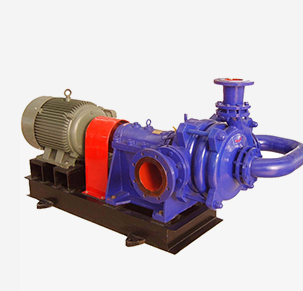English
- Afrikaans
- Albanian
- Amharic
- Arabic
- Armenian
- Azerbaijani
- Basque
- Belarusian
- Bengali
- Bosnian
- Bulgarian
- Catalan
- Cebuano
- Corsican
- Croatian
- Czech
- Danish
- Dutch
- English
- Esperanto
- Estonian
- Finnish
- French
- Frisian
- Galician
- Georgian
- German
- Greek
- Gujarati
- Haitian Creole
- hausa
- hawaiian
- Hebrew
- Hindi
- Miao
- Hungarian
- Icelandic
- igbo
- Indonesian
- irish
- Italian
- Japanese
- Javanese
- Kannada
- kazakh
- Khmer
- Rwandese
- Korean
- Kurdish
- Kyrgyz
- Lao
- Latin
- Latvian
- Lithuanian
- Luxembourgish
- Macedonian
- Malgashi
- Malay
- Malayalam
- Maltese
- Maori
- Marathi
- Mongolian
- Myanmar
- Nepali
- Norwegian
- Norwegian
- Occitan
- Pashto
- Persian
- Polish
- Portuguese
- Punjabi
- Romanian
- Russian
- Samoan
- Scottish Gaelic
- Serbian
- Sesotho
- Shona
- Sindhi
- Sinhala
- Slovak
- Slovenian
- Somali
- Spanish
- Sundanese
- Swahili
- Swedish
- Tagalog
- Tajik
- Tamil
- Tatar
- Telugu
- Thai
- Turkish
- Turkmen
- Ukrainian
- Urdu
- Uighur
- Uzbek
- Vietnamese
- Welsh
- Bantu
- Yiddish
- Yoruba
- Zulu
Telephone: +86 13120555503
Email: frank@cypump.com
Dec . 04, 2024 16:33 Back to list
multistage slurry pump
Understanding Multistage Slurry Pumps A Comprehensive Overview
In various industrial applications, the efficient transportation of abrasive and viscous materials is a significant challenge. Multistage slurry pumps emerge as a critical solution, designed specifically to handle such demanding tasks. This article delves into the workings, applications, benefits, and maintenance aspects of multistage slurry pumps, illuminating their essential role in various industries.
What is a Multistage Slurry Pump?
A multistage slurry pump is a specialized pump designed to move mixtures of liquids and solid particles, known as slurries, at high pressures. Unlike single-stage pumps, which have one impeller, multistage slurry pumps employ multiple impellers stacked in series, enabling them to generate significantly higher pressure outputs. This design allows them to transport slurries over long distances, making them critically important in mining, mineral processing, and wastewater treatment.
Working Principle
The operational principle of a multistage slurry pump is relatively straightforward. As the slurry enters the pump, it is directed into the first impeller. The impeller's rotation imparts kinetic energy to the slurry, increasing its velocity. This kinetic energy is then converted into pressure energy as the slurry passes through the diffuser and volute of the pump. Each subsequent impeller in the multistage configuration adds additional pressure, allowing the slurry to overcome resistance and maintain flow.
Applications
Multistage slurry pumps are extensively used across various industries
1. Mining and Mineral Processing They are particularly vital for transporting tailings, which are mixtures of water and minerals, and during the extraction process.
2. Wastewater Treatment These pumps are crucial in sludge handling, ensuring that solid waste is efficiently moved through the treatment facility.
3. Construction Multistage slurry pumps are utilized for dewatering applications, especially in areas with high groundwater levels or in foundations.
4. Chemical Processing They handle corrosive materials and mixtures encountered in the production of chemicals, where material integrity and efficiency are paramount.
Benefits of Multistage Slurry Pumps
multistage slurry pump

The advantages of using multistage slurry pumps include
- High Efficiency The ability to achieve higher pressures means that these pumps can effectively transport slurries over long distances without losing flow rate.
- Versatility They can handle a wide range of slurry types, including those with high solid content and varying viscosities.
- Durability Designed to withstand abrasive materials, multistage slurry pumps are typically constructed from robust materials, ensuring longevity and reduced maintenance costs.
- Cost-Effective By minimizing downtime and reducing the need for multiple pump systems, multistage slurry pumps offer a more economical solution in the long run.
Maintenance Considerations
While multistage slurry pumps are robust, regular maintenance is essential to ensure optimal performance. Key maintenance practices include
1. Routine Inspections Regularly check for wear and tear, especially on impeller and casing components.
2. Sealing Systems Ensure that the sealing systems are functioning correctly to prevent leaks, which can lead to material loss and equipment damage.
3. Lubrication Proper lubrication of moving parts is crucial to reduce friction and prevent overheating.
4. Monitoring Performance Keeping an eye on performance metrics, such as flow rate and pressure, can help identify potential issues before they escalate.
Conclusion
In summary, multistage slurry pumps are indispensable tools in various industries that require the transportation of abrasive and viscous materials. Their ability to deliver high pressure over long distances, coupled with a robust design, makes them a reliable choice for managing complex slurry challenges. With regular maintenance and careful operation, these pumps can provide efficient and effective solutions, ultimately supporting the operational success of many industrial processes. As the demand for such pumps continues to rise, understanding their characteristics, applications, and maintenance requirements is essential for engineers and operators alike.
-
ISG Series Vertical Pipeline Pump - Chi Yuan Pumps Co., LTD.
NewsJul.30,2025
-
ISG Series Vertical Pipeline Pump - Chi Yuan Pumps Co., LTD.|energy-efficient fluid handling&industrial durability
NewsJul.30,2025
-
ISG Series Vertical Pipeline Pump - Chi Yuan Pumps | Advanced Engineering&Industrial Efficiency
NewsJul.30,2025
-
ISG Series Pipeline Pump - Chi Yuan Pumps | High Efficiency, Energy Saving
NewsJul.30,2025
-
ISG Series Vertical Pipeline Pump-Chi Yuan Pumps|High Efficiency&Reliable Performance
NewsJul.29,2025
-
ISG Series Vertical Pipeline Pump|High Efficiency&Low Noise
NewsJul.29,2025










